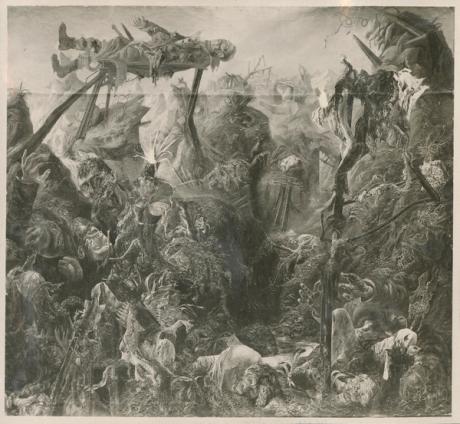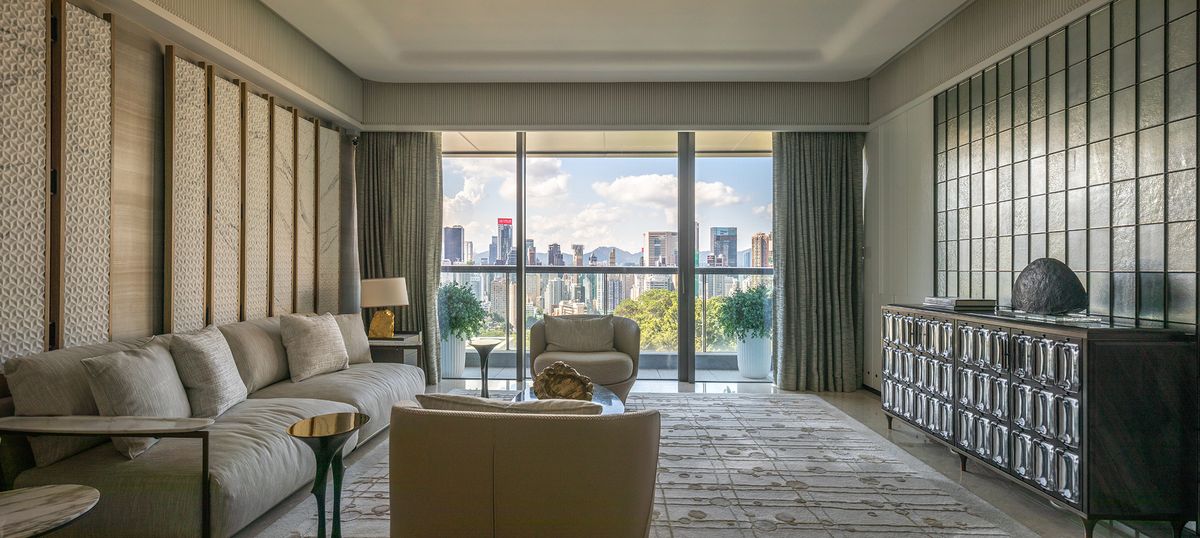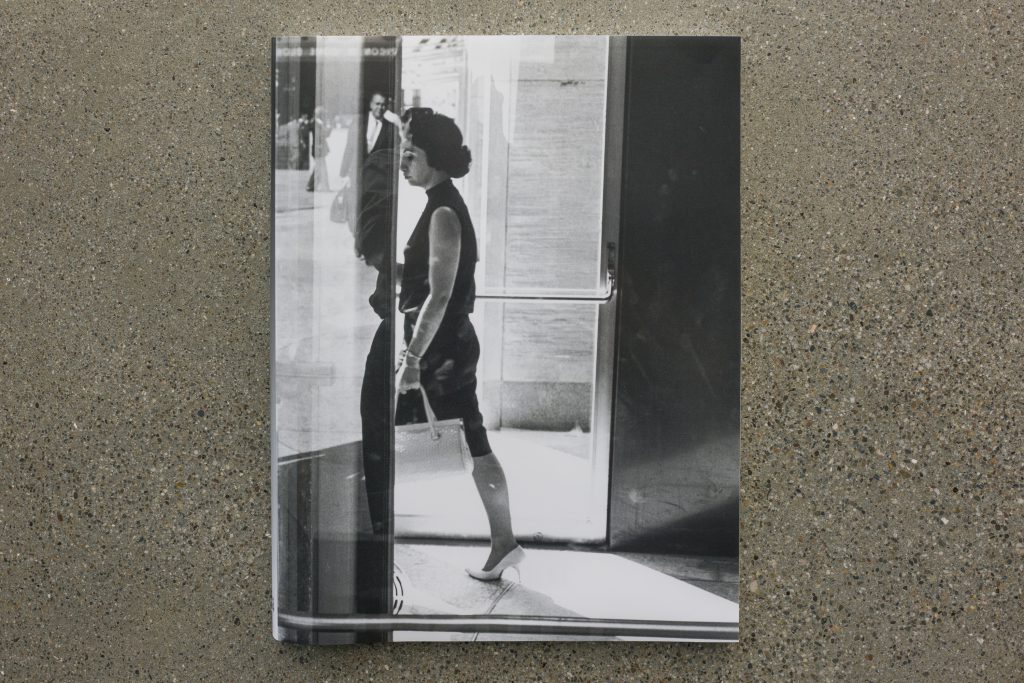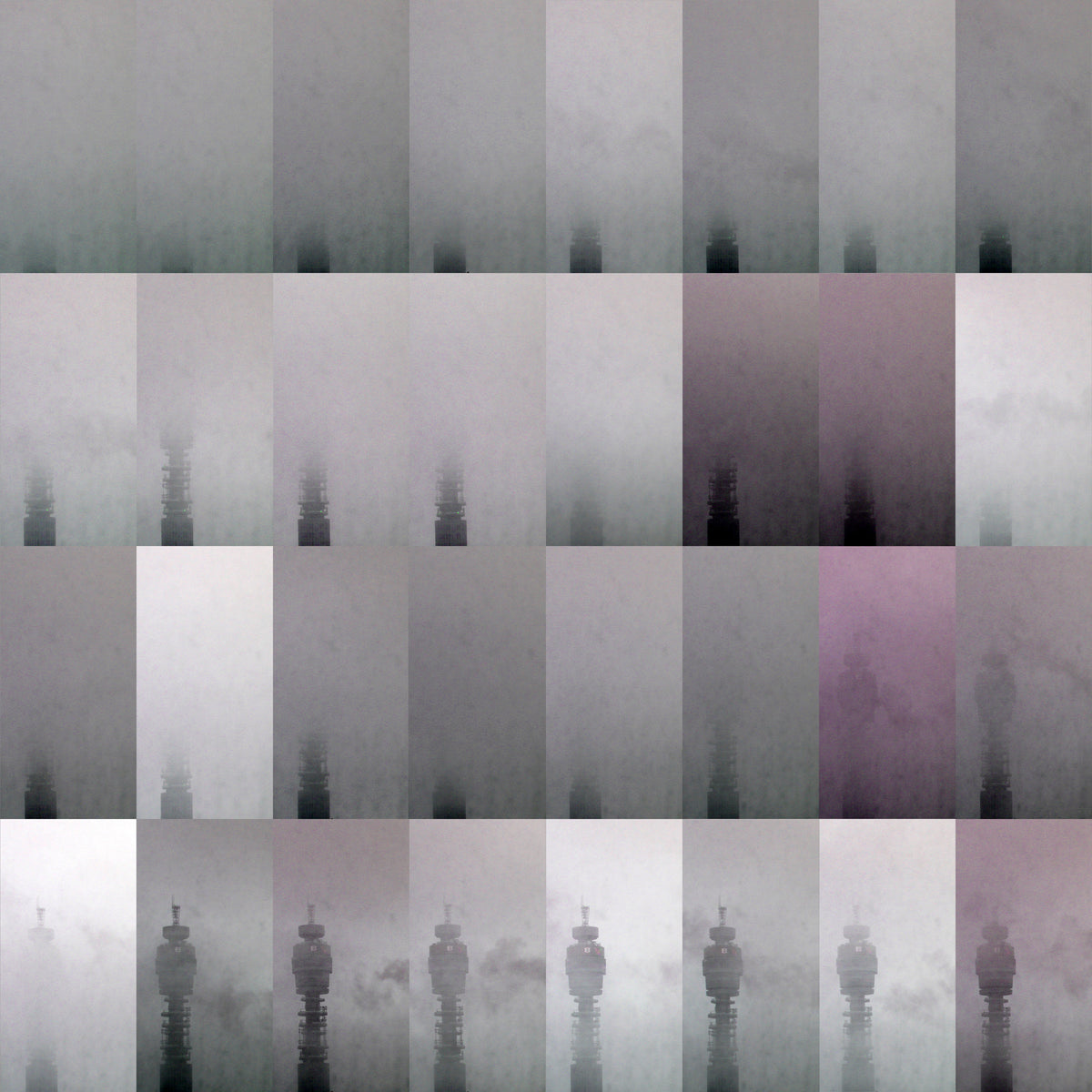Untitled
2012 - Drawing & Print (Drawing & Print)
Mark Bradford
This untitled work from 2012 is a print originally made as part of the Wattis Institute for Contemporary Art’s artist limited edition series. It’s contrasting dark and vibrant tones presage his later series of works, exhibited at L. A.’s Hammer Museum as Scorched Earth. These larger works share a map-like quality, looking like aerial views of some scarred urban landscape. Black and red lines sear across the compositions, made through Bradford’s unique layering and burning techniques. The 2012 print—a small shard, perhaps, from one of these larger views of the land—shares this approach. Greyed fragments crisp along the edges into rock-like formations, engulfed in the umber and orange colors of fire.
Born and raised in Los Angeles, artist Mark Bradford draws material, inspiration, and methods from the city streets that surround him. His large-scaled collage paintings for which he is known are often built up through layers of repurposed street advertisements, hair papers, flyers, and scraps. Cementing these fragments together with paint and overlaying recycled street art stencils, Bradford evokes rich, colorful works that are alive with texture, and teeming with shards of the material world. In his earliest works, Bradford relied heavily on hair papers (used during the process of permanently curling hair), pilfered from his mother’s beauty salon in L.A. Singing the edges, Bradford created unsteady grids and jumbled geometries shot through with color.
Colors:
Related works sharing similar palette

© » KADIST
Leslie Shows
Human Quarry is a large work on paper by Leslie Shows made of a combination of acrylic paint and collage...

© » KADIST
Vivian Suter
Vivian Suter paints her canvases and then allows them to come in contact with natural elements...

© » THEARTNEWSPER
German Academy of Arts opens Otto Dix archive—and recalls a scandal Art market Museums & heritage Exhibitions Books Podcasts Columns Technology Adventures with Van Gogh Search Search Otto Dix news German Academy of Arts opens Otto Dix archive—and recalls a scandal Dix’s war painting The Trench, lost during the Second World War, is in focus at the opening Catherine Hickley 7 February 2024 Share Otto Dix's Der Schützengraben (The Trench) (1923) provoked a strong reaction when it was first displayed 100 years ago Photo: Hugo Erfurth, Akademie der Künste Berlin, Otto-Dix-Archiv A century after Otto Dix’s First World War painting The Trench (1923) provoked an outcry when it was displayed at the Prussian Academy of Arts in Berlin, the institution's successor, the Germany Academy of Arts , is opening to the public the inventory of the artist's works that he compiled—somewhat grudgingly...

© » SLASH PARIS
Romain Best — Coulissements par frictions — Frac île-de-france, le Plateau — Exposition — Slash Paris Connexion Newsletter Twitter Facebook Romain Best — Coulissements par frictions — Frac île-de-france, le Plateau — Exposition — Slash Paris Français English Accueil Événements Artistes Lieux Magazine Vidéos Retour Romain Best — Coulissements par frictions Exposition Installations, sculpture, techniques mixtes Romain Best, Coulissements par frictions, 2023 © Romain Best Romain Best Coulissements par frictions Encore 27 jours : 9 novembre 2023 → 7 janvier 2024 Présenté dans la Project Room du Plateau, Romain Best est né en 1995 à Lyon...

© » WHITEHOT
Whitehot Recommends: Hunter Amos at Anna Zorina Gallery advertise donate post your art opening recent articles cities contact about article index podcast main February 2024 "The Best Art In The World" "The Best Art In The World" February 2024 Whitehot Recommends: Hunter Amos at Anna Zorina Gallery Installation view...

© » ARTFORUM
Virginia Museum of Fine Arts Returns 44 Artifacts to Egypt, Italy, and Turkey – Artforum Read Next: LOUVRE RAISES TICKET PRICES BY NEARLY 30 PERCENT Subscribe Search Icon Search Icon Search for: Search Icon Search for: Follow Us facebook twitter instagram youtube Alerts & Newsletters Email address to subscribe to newsletter...

© » WALLPAPER*
Tour La Maison Blanche by Cream | Wallpaper (Image credit: Cream) By Ellie Stathaki published 17 December 2023 Architect Antony Chan’s newest project, La Maison Blanche, is an apartment transformation tailor made for the scheme's location and long vistas – as it sits nestled high above the rooftops in the mid-level area of Hong Kong...

© » LONDONIST
The National Portrait Gallery's Pavilion Cafe | Londonist That Kiosk Outside The National Portrait Gallery Is About To Reopen As A Cafe By Will Noble Will Noble That Kiosk Outside The National Portrait Gallery Is About To Reopen As A Cafe The former ticket booth opens as a cafe on 1 November 2023...












